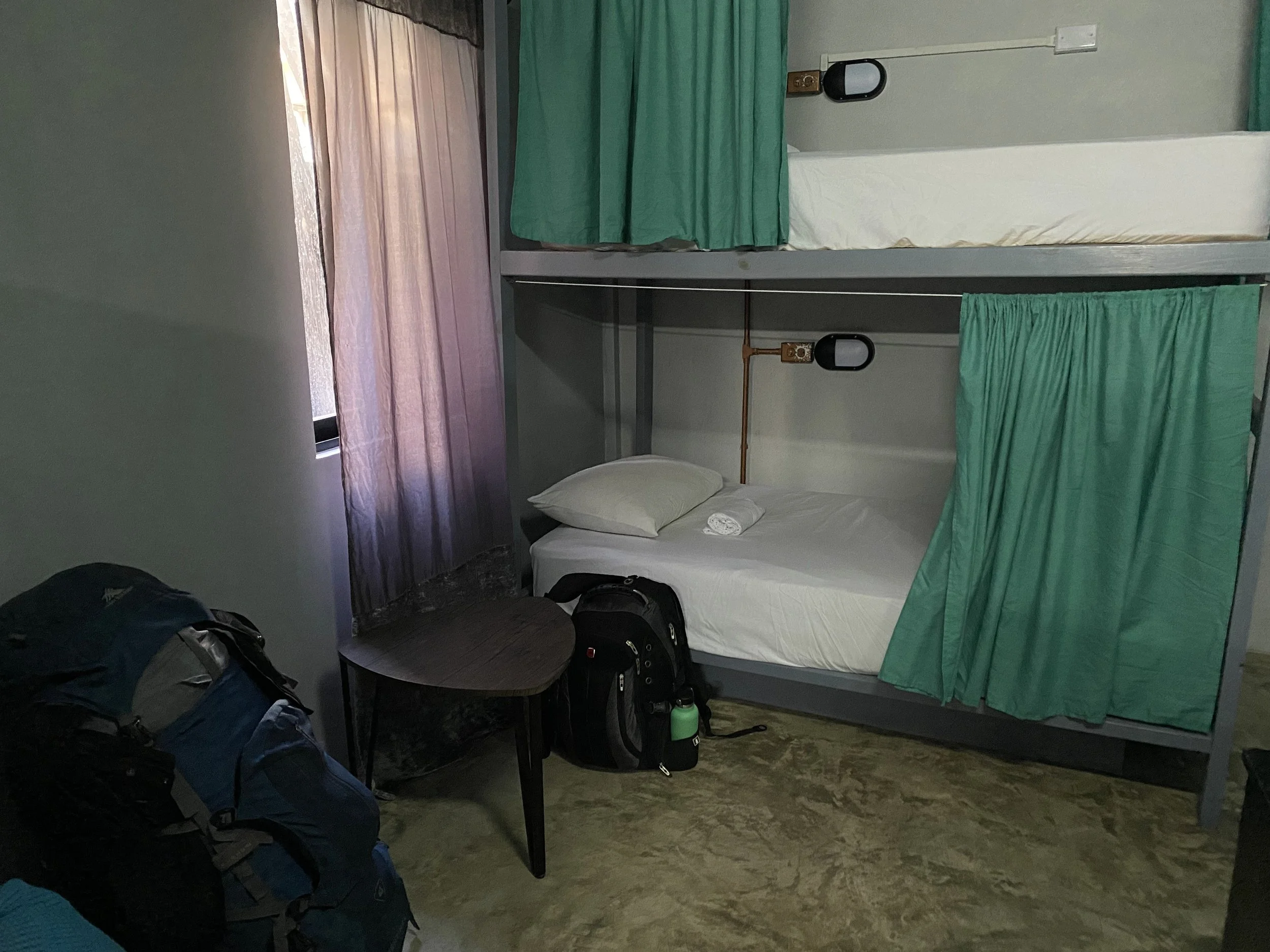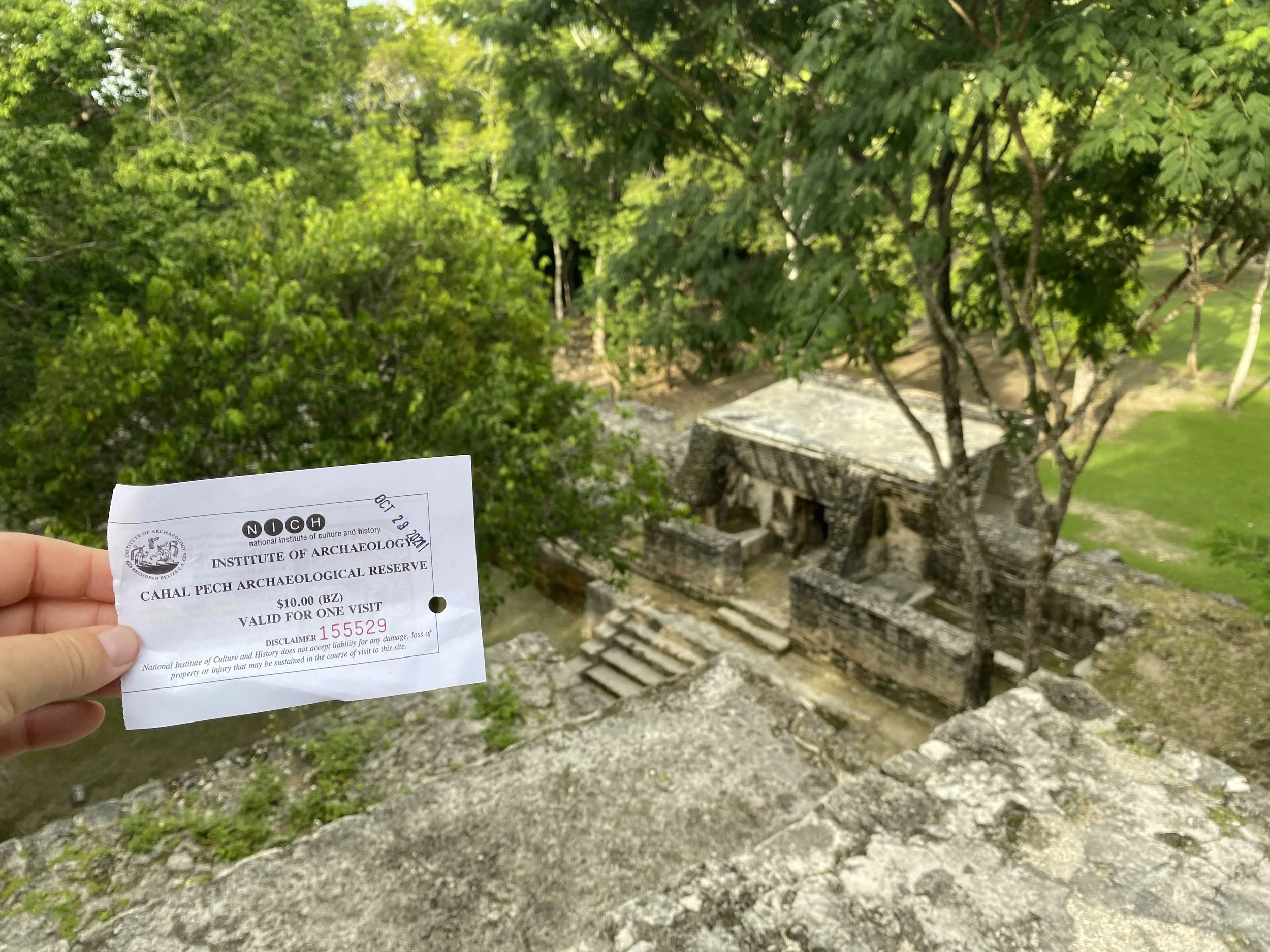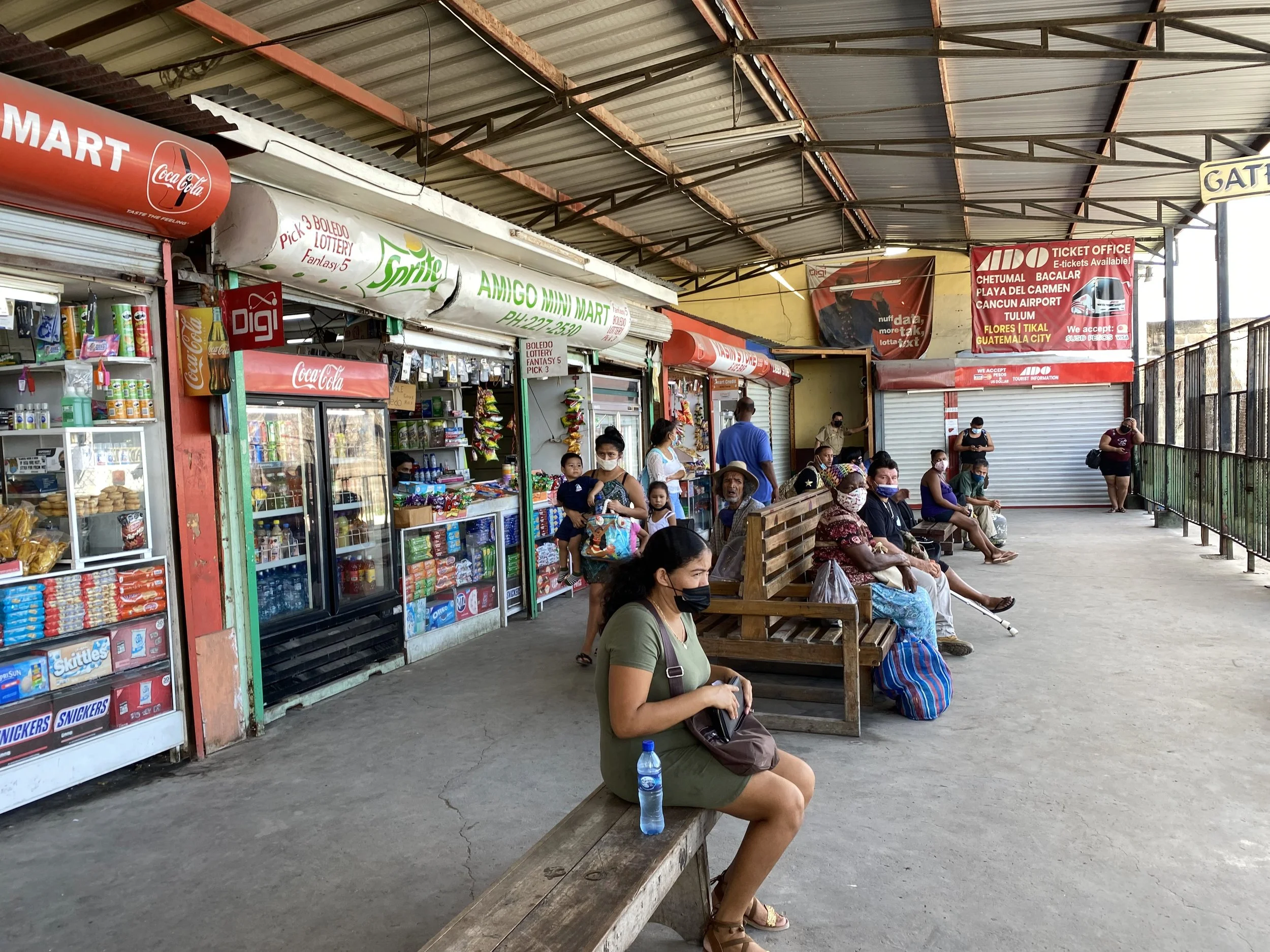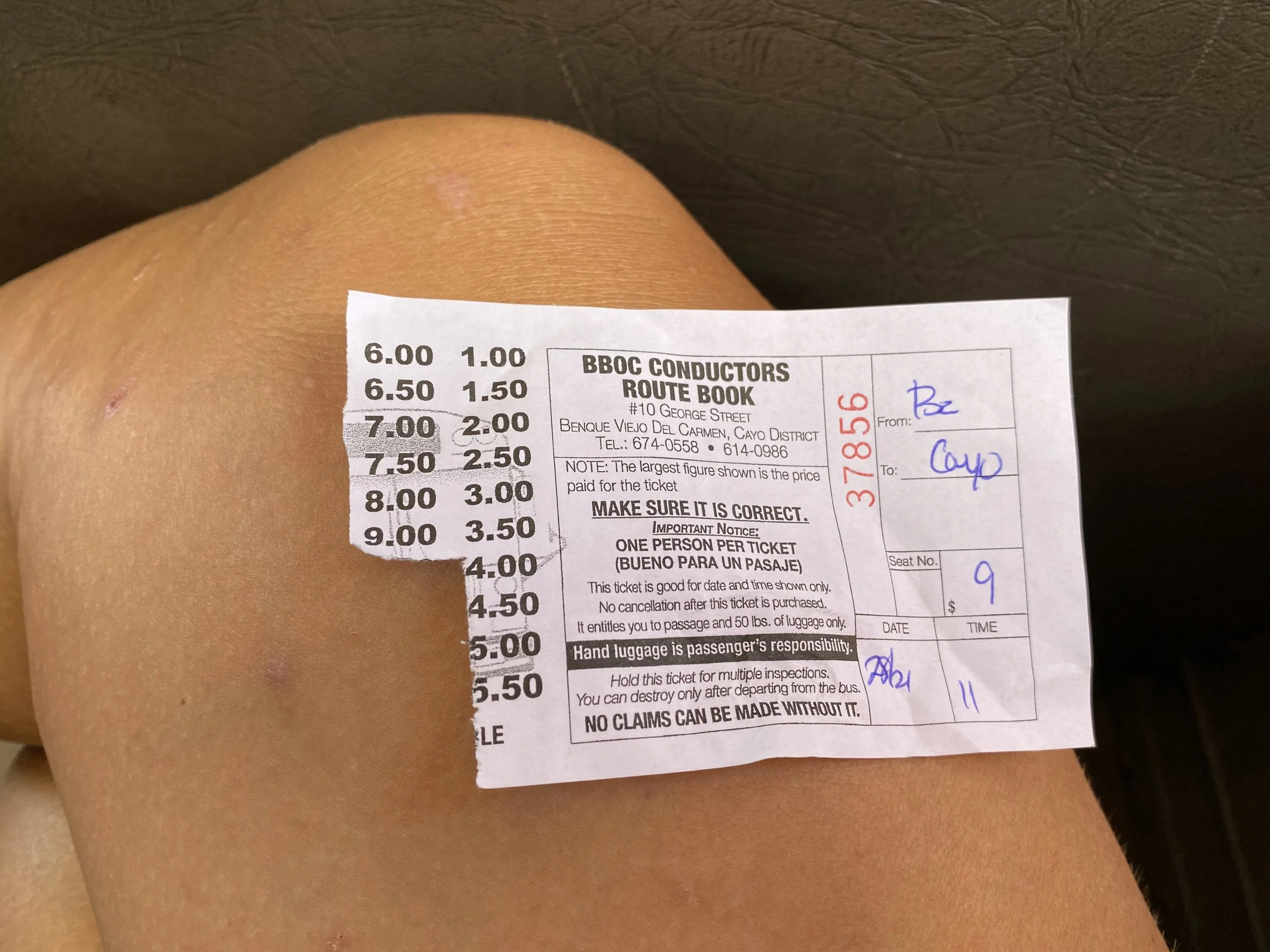The Solo Explorer’s Guide to Belize
From tubing through turquoise waters to exploring ancient Maya ruins and caring for rescued manatees — Belize was equal parts adventure and heart.
Intro
I came to Belize looking for a change of pace. I stopped first in San Pedro to unwind—lazy days by the beach, slow sunsets, and no schedule—before heading north to the small coastal village of Sarteneja, where I volunteered at Wildtracks, a manatee rehabilitation center.
What was meant to be a one-month stay turned into six weeks—I couldn’t bring myself to leave. My days revolved around the lagoon: paddling through seagrass, feeding manatees, and learning each animal’s quirks by heart. It was hard work, but the kind that fills your soul.
When my volunteer time ended, I traveled inland to San Ignacio to explore Mayan ruins and jungle trails. Because of my budget, I skipped the famous Blue Hole dive and the ATM Caves—two Belize highlights many travelers rave about—but I never felt like I missed out. Some of my best memories came from quiet moments with locals and the wildlife around me.
💡 JD’s Tip: Belize is perfect for slowing down. Whether you’re volunteering, exploring ruins, or simply watching the sunset ripple across the lagoon, this country teaches you how to breathe again.
One of my most meaningful moments in Belize: bottle-feeding a rescued manatee at the rehabilitation center.
🌺 Why Belize Is Great for Solo Female Travelers
English is the official language, so communication is easy everywhere
Small and simple to navigate with buses, boats, and shared taxis
Locals are friendly, helpful, and often go out of their way to assist
Feels safe, especially in smaller towns and island areas
Incredible mix of beaches, jungle, and ancient ruins—all within a few hours’ travel
Great opportunities for volunteering and eco-tourism
Affordable guesthouses and hostels make it easy to travel on a budget
Relaxed “go slow” culture—perfect for recharging or easing into Central America
💡 JD’s Tip: Belize feels safe and easygoing, but like anywhere, trust your instincts. During the day, you’ll find locals eager to chat and help—one reason it’s such a great country to travel solo.
Ancient ruins, lush jungles, and a dash of adventure — Belize has a bit of everything.
🧳 Entry Requirements (for Canadians & most tourists)
Tourists from Canada, the U.S., the U.K., and most EU countries can visit Belize visa-free for up to 30 days. Extensions can be arranged through local immigration offices if you plan to stay longer.
Your passport must be valid for at least 6 months beyond your arrival date.
No tourist visa is required for short stays under 30 days.
You may be asked to show proof of onward travel or a return ticket at the border or airport.
Some visitors are asked to show proof of sufficient funds (around USD $75 per day).
There are no mandatory vaccines, but standard travel vaccines (like Hepatitis A and Typhoid) are recommended.
A small departure tax (around USD $40–$45) is often included in your flight ticket, but check before you go.
💡 JD’s Tip: If you’re crossing by land from Mexico or Guatemala, bring cash for small border fees. And before flying out, confirm whether your departure tax is included in your ticket—it varies by airline.
⚠️ Disclaimer: Entry requirements may change based on your nationality and government policies. Always check official sources before traveling.
The first glimpse of Belize — where your Caribbean adventure officially begins.
🕰️ Best Time to Visit
🌸 Dry Season (December–May) is ideal — sunny days, calm seas, and great conditions for snorkeling, diving, and exploring. Expect slightly higher prices and more tourists between January and April, especially on the islands.
🌦️ Wet Season (June–November) brings heavier rain and humidity, but also fewer crowds and lower prices. Showers usually pass quickly, and it’s still warm enough for swimming and outdoor adventures.
🌪️ Hurricane Season (August–October) can affect travel plans, especially on the coast, though major storms are relatively rare.
💡 JD’s Tip: I was in Belize during the rainy season and still got lucky with mostly sunny days. We had a few heavy storms at Wildtracks, but nothing that lasted long. The rain brought cooler evenings, fewer tourists, and a slower pace — perfect for enjoying Belize’s “go slow” lifestyle.
Even on humid days, Belize greets you with postcard-worthy sunrises like this.
💵 Money & Currency: How to Pay in Belize
💰 Local Currency: Belize Dollar (BZD)
💱 Exchange Rate: 1 USD = 2 BZD (the rate is fixed and rarely changes)
💳 Cards: Credit cards (Visa & Mastercard) are accepted at mid-range hotels and some restaurants, but smaller shops, markets, and local buses are cash-only.
💵 Cash: Essential for everyday purchases — especially in rural areas, local eateries, and water taxis. U.S. dollars are widely accepted, but change is usually given in Belize dollars.
🏧 ATMs: Found in most towns, but may charge high foreign-transaction fees. Bring extra cash before traveling to smaller villages or islands.
💡 JD’s Tip: Bring small bills for buses, ferries, and food stalls. Belize uses both USD and BZD interchangeably, so always double-check which currency a price is quoted in before paying.
🪙 Disclaimer: Exchange rates and fees can change. Confirm with your bank before traveling and notify them of your trip to avoid card blocks.
No conversion math headaches here! Belize keeps it simple with a fixed exchange rate to USD.
🛏️ Where to Stay
Booking Tips:
🌴 Most travelers skip Belize City and head straight to the islands or inland towns. For beach time, San Pedro on Ambergris Caye is lively and easy to reach by ferry from Belize City. You’ll find everything from hostels to boutique resorts along the waterfront.
🍹 Caye Caulker is another popular island destination—smaller, more relaxed, and known for its “Go Slow” motto. It’s ideal for backpackers and budget travelers looking for a beachy, low-key vibe.
🌿 If you want to experience local life or volunteer, head to Sarteneja — a quiet coastal village surrounded by mangroves and lagoons. It’s also where Wildtracks, the manatee rehabilitation center, is based.
🏛️ For history and adventure, stay in San Ignacio — the gateway to Mayan ruins, jungle tours, and river caves. There are plenty of budget guesthouses within walking distance of the main square.
Places I Stayed:
🏖️ San Pedro: I stayed at Drift Inn San Pedro, a friendly hostel run by a young American woman who hires locals to help run the place. It had a relaxed vibe, was a short walk from the water, and was perfect for unwinding after my flight.
🌿 San Ignacio: I stayed at Bella’s Backpackers Cayo, a locally owned guesthouse with plenty of tour options. When I visited (at the end of COVID), it was much quieter than usual.
💡 JD’s Tips:
I booked all my accommodation through Booking.com — it made comparing hostels and guesthouses super easy.
Budget guesthouses and eco-lodges often offer discounts for longer stays or volunteers.
Cash is preferred in smaller towns and local-run accommodations.
Book ahead during December–April, especially in island or coastal areas.
Ask if ferry transfers or tours can be arranged directly through your accommodation — it’s often cheaper than booking online.
Budget-friendly stays like this hostel make traveling Belize affordable and social.
🍽️ What to Eat
🍛 Rice and Beans – The national dish of Belize, served with stew chicken or pork. Cooked in coconut milk, it’s hearty, flavorful, and found everywhere from roadside stands to family kitchens.
🍳 Fry Jacks – Puffy, fried dough triangles often served at breakfast with refried beans, eggs, and cheese. They’re comfort food at its best.
🐟 Grilled Fish & Seafood – Freshly caught snapper, lobster, and conch are common along the coast and islands. Grilled or stewed, they’re simple but full of flavor.
🌮 Stew Chicken – A Belizean classic made with local spices and brown sugar for a rich, caramelized flavor. Usually paired with rice and beans.
🍤 Conch Fritters – Deep-fried dough balls filled with chopped conch (a local shellfish) and spices. Perfect as a beach snack or bar appetizer.
🥭 Fresh Fruit – Mangoes, pineapples, and papayas are incredibly sweet and cheap, especially from roadside vendors.
🍹 Rum Punch & Belikin Beer – Belize’s go-to drinks. Rum punch is fruity and strong, while Belikin—the local beer—is a refreshing way to end a hot day.
💡 JD’s Tip: The best meals I had were from local cafés and food stands, not restaurants. Don’t be afraid to try small, family-run spots—they’re cheaper, more authentic, and usually the most delicious.
A true Belizean spread: rice, beans, fried plantains, and everything homemade.
📖 Suggested Itinerary (7–10 Days in Belize)
🏖️ San Pedro – 2–3 days
Start your trip on Ambergris Caye, Belize’s most popular island. Spend your days snorkelling or diving at Hol Chan Marine Reserve and Shark Ray Alley, where you can swim alongside nurse sharks and rays. In the evenings, stroll along the waterfront and unwind with rum punch at sunset.
🕰️ Perfect for easing into the trip and soaking up island life before heading inland.
🌴 Caye Caulker – 2–3 days
Hop on a short ferry ride to Caye Caulker, known for its “Go Slow” motto and chilled-out vibe. Spend your days at The Split, take a snorkel or dive trip along the Barrier Reef, or simply enjoy fresh seafood on the beach.
🕰️ Best for budget travelers and anyone craving laid-back beach days and easy access to world-class reefs.
🏛️ San Ignacio – 2–3 days
Head inland to explore Belize’s cultural and jungle side. Visit the Mayan ruins of Xunantunich or Cahal Pech, wander through local markets, and take a day trip to the famous ATM Caves (Actun Tunichil Muknal)—an unforgettable adventure through an underground river filled with ancient artifacts.
🕰️ Ideal for combining culture, adventure, and nature before looping back toward Belize City.
🌊 Optional Add-On: The Great Blue Hole – 1 day
Experienced divers can’t miss the chance to see Belize’s most iconic site, the Great Blue Hole, a massive marine sinkhole visible from the air and accessible by boat tour from San Pedro or Caye Caulker.
🕰️ It’s pricey but bucket-list worthy.
💡 JD’s Tip: Belize may be small, but getting between islands and inland towns takes time—especially by bus or ferry. Keep your itinerary flexible and don’t overpack your schedule so you can enjoy the “go slow” rhythm Belize is famous for.
From beaches to ruins — Belize’s small size makes it easy to see it all.
🧭 Getting Around Belize
🚌 Buses
Use For: Getting between towns and cities on the mainland. They’re cheap, frequent, and the main way locals travel.
💡 Tip: Expect older, colorful school buses — fun but basic! Bring small bills and be ready to flag them down anywhere along the road.
🚤 Ferries / Water Taxis
Use For: Traveling between Belize City, San Pedro, and Caye Caulker. Boats run several times a day and are the main link between the mainland and islands.
💡 Tip: Book round-trip tickets to save money, and arrive early — luggage is piled onboard quickly, and boats can fill up fast.
🚕 Taxis
Use For: Short rides within towns or to and from ferry terminals.
💡 Tip: Always ask the price before getting in — taxis don’t use meters, and prices are usually quoted in Belize dollars.
🚗 Car Rentals
Use For: Exploring remote areas or nature reserves, especially in western Belize.
💡 Tip: Roads can be rough or unpaved in parts of the country, so rent a 4x4 if you plan to drive beyond major highways.
✈️ Domestic Flights
Use For: Fast connections between Belize City, San Pedro, and Caye Caulker via small regional airlines.
💡 Tip: Great option if you’re short on time, but more expensive than ferries — book online early for the best fares.
💡 JD’s Tip: Belize’s transport is reliable but slow, so plan travel days with flexibility. I usually built in a few extra hours between ferries and buses — it’s better to arrive early than rush in island heat.
The Ocean Ferry connects the mainland to Caye Caulker and Ambergris Caye — budget-friendly and scenic.
💰 Budget Breakdown / Day (in $USD)
Accommodation
Low: $25–45 — Hostels, budget hotels, local guesthouses
Mid: $60–100 — Boutique hotels, small resorts, B&Bs
High: $150+ — Upscale beach resorts or eco-lodges
Food
Low: $10–20 — Street food, small cafés, local comedores
Mid: $25–40 — Sit-down restaurants, seafood grills
High: $60+ — Fine dining, beachfront restaurants
Transport
Low: $5–15 — Buses, walking, shared taxis
Mid: $20–40 — Ferries / water taxis, occasional flight
High: $60+ — Private transfers or car rental
Attractions & Tours
Low: $5–15 — Local museums, small ruins
Mid: $30–60 — Snorkeling, short day trips
High: $100–250+ — Diving the Blue Hole or ATM Cave tour
👉 Total/Day
Low: $45–95
Mid: $135–240
High: $350–600+ (resorts, domestic flights, Blue Hole/ATM tours)
💡 JD’s Tip: Belize isn’t the cheapest in Central America, but you can keep costs down by eating local, sharing transport, and choosing a couple of big-ticket adventures instead of trying to do them all. Volunteering or slow travel helps, too.
Exploring Cahal Pech: priceless experience, $5 USD entry fee.
🛍️ Souvenirs to Buy in Belize
🐢 Wood Carvings – Hand-carved turtles, manatees, and masks made by local artisans, often sold at markets and roadside stands.
🎨 Handmade Jewelry – Beaded bracelets, shell necklaces, and locally made silver or copper pieces found in beach shops and craft markets.
🪵 Mahogany Products – Belize’s national tree. Look for small, sustainably made bowls, picture frames, or coasters.
🧉 Belizean Hot Sauce (Marie Sharp’s) – A must-buy! Locally produced and world-famous for its unique blend of habanero and carrot.
🧴 Coconut Oil Products – Locally produced oils and soaps that make perfect lightweight gifts.
🐚 Conch Shell Art – Polished shells, keychains, and ornaments crafted from responsibly sourced conch.
🧢 Belikin Beer Merchandise – Hats, shirts, and bottle openers with the logo of Belize’s iconic local beer.
📬 Postcards or Local Art Prints – Support Belizean artists while taking home tropical watercolor scenes or reef paintings.
💡 JD’s Tip: Buy souvenirs from small, local vendors or markets instead of cruise ports or tourist shops — you’ll get better prices and help support the community directly.
Belikin: the beer of Belize, best enjoyed barefoot with ocean views.
🧘♀️ Solo Travel & Cultural Tips
Belizeans are friendly and love to chat — a simple “Good morning” or “Good afternoon” goes a long way.
English is the official language, but you’ll also hear Kriol, Spanish, and Mayan dialects.
Keep clothing casual but respectful, especially in villages or when visiting churches.
Tap water isn’t safe to drink everywhere — buy bottled water or use a filter bottle.
Be mindful when photographing locals; always ask first, especially in rural areas.
Street food is delicious and safe if it’s freshly cooked — follow the locals’ lead.
Many shops close early, so plan errands and travel during daylight.
Most areas are safe, but avoid walking alone late at night and keep valuables low-key.
💡 JD’s Tip: Belize runs on “island time,” even on the mainland. Be patient if buses or ferries run late — things usually work out, just slower than you might expect!
Waiting for the next bus — Belize style. Patience, smiles, and casual chats with locals go a long way.
💡 JD’s Tips
Skip Belize City – Most travelers head straight to the islands or inland towns — it’s safer, cleaner, and more enjoyable.
Book ferries early – Boats to Caye Caulker and San Pedro can fill up fast, especially on weekends and holidays.
Bring cash – Many local cafés, buses, and markets don’t take cards, especially in smaller towns.
Eat local – Street food and small eateries are cheaper, fresher, and often better than restaurants catering to tourists.
Protect the reef – Use reef-safe sunscreen and avoid touching coral or marine life while snorkeling or diving.
Stay flexible – Weather and ferry schedules can change quickly, especially during the rainy season — Belize runs on “island time.”
Don’t try to do it all – The Blue Hole, ATM Caves, and ruins are incredible, but spacing them out makes the experience more enjoyable (and affordable).
Chat with locals – Belizeans are welcoming, helpful, and full of stories — a smile and small talk can lead to great recommendations.
Don’t rush to your next destination — moments like this are why you came.
🗣️ Speak a Little Belizean
English is the official language, but most locals speak Belizean Kriol — a laid-back, rhythmic dialect that’s easy to pick up once you hear it. You’ll also hear Spanish and Mayan languages, especially inland.
Common Kriol Phrases:
Wah gwaan? — What’s up? / How are you? — wah GWAAN
Mi deh yah. — I’m good / I’m here — mee deh YAH
Tank yuh. — Thank you — tank yuh
Small ting. — No problem / It’s nothing — smol ting
Go slow. — Relax / Take it easy — go sloh
Handy Spanish Words:
Hola — Hello — OH-lah
Gracias — Thank you — GRAH-syahs
Por favor — Please — por fah-VOR
💡 JD’s Tip: Even though English is spoken everywhere, locals love when travelers try a little Kriol — it shows respect and often earns you a big smile (and sometimes a discount).
Practice makes progress — even a simple “Good morning!” or “Gracias!” gets big smiles in Belize.














